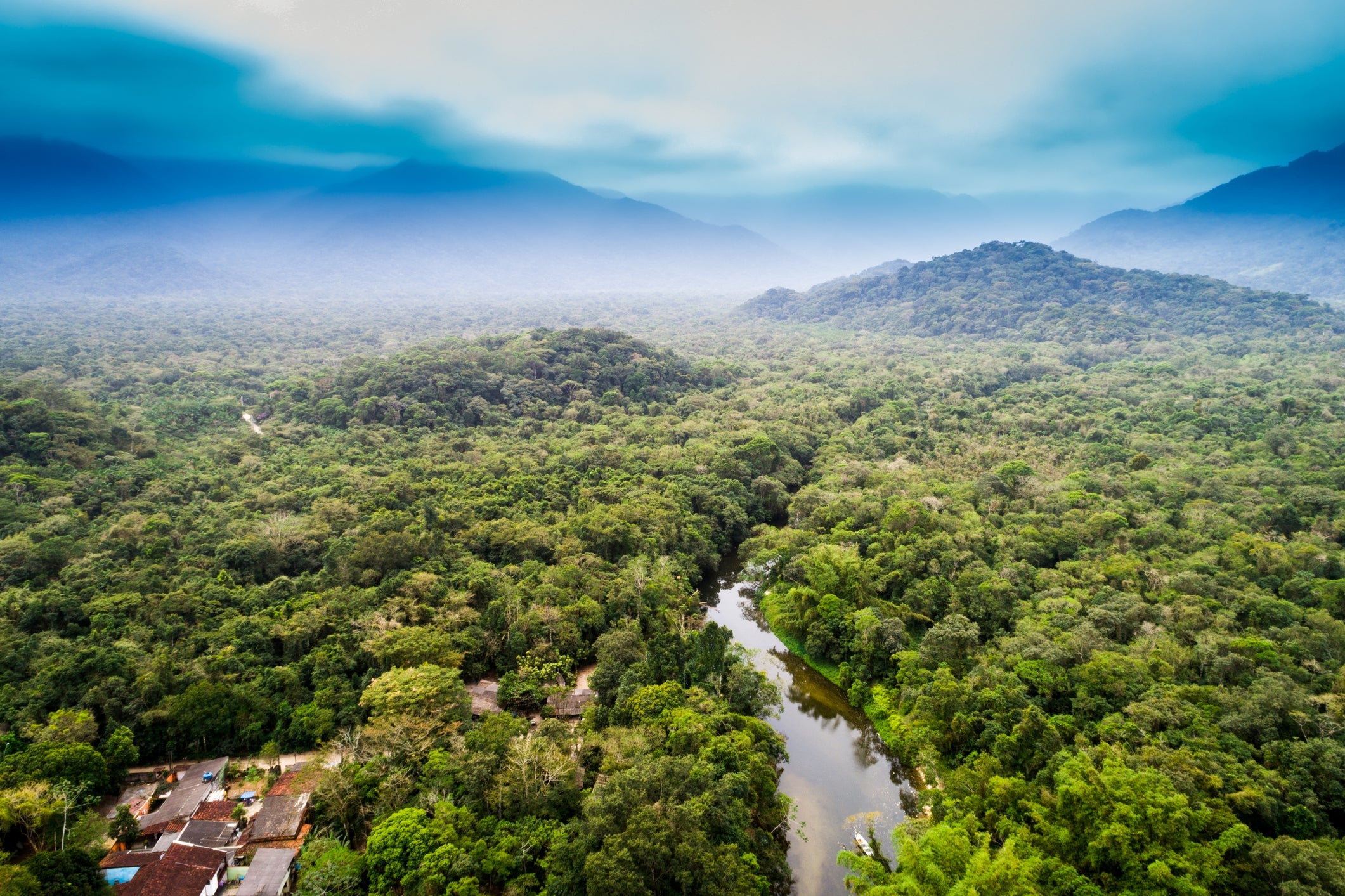Climate justice means protecting the rights of indigenous peoples – they are the best stewards of their lands
The cost of protecting indigenous lands is not high when we take into account the benefits they bring to the world, write Dinamam Afer Jurum Tuxa and Leila Saraiva

Traditional communities and indigenous peoples are fundamental agents in the fight against climate change. Through the relationship they build with the land and the way they manage their territories, these communities are the most important and best guardians of forests and native vegetation all over the world. In Brazil, for instance, in the region known as the Legal Amazon, the deforested area was 20 times lower within indigenous territories compared to non-indigenous ones, in 2020 alone.
This is why, according to the Special Report on Climate Change issued by the Intergovernmental Panel on Climate Change (IPCC), policies that strengthen indigenous peoples and local communities must be prioritised. However, a study launched this year by the Rainforest Foundation Norway states that less than 1 per cent of the official aid for climate change development reached projects in indigenous communities in the last decade. Moreover, only a small fraction of these resources go directly to indigenous organisations due to bureaucratic barriers.
In Brazil, indigenous peoples have constitutional rights to their traditionally occupied territories. Besides the demarcation of lands, which recognises the relationship between communities and their lands, forcing the state to protect them, there are also other mechanisms for these areas’ preservation, such as Environmental and Land Management Plans (PGTA).
The PGTA summarises the wishes and demands of indigenous peoples regarding territorial protection, income generation, education, food sovereignty and governance. They are fundamental tools for protecting communities’ autonomy and safeguarding their territories.
Indigenous territorial rights, however, are at risk in Brazil. From incentives and invasions of indigenous lands, to attempts to dissolve their constitutional rights to demarcated areas, Jair Bolsonaro’s administration has attacked Brazilian indigenous communities in every possible way.
To keep up to speed with all the latest opinions and comment sign up to our free weekly Voices Dispatches newsletter by clicking here
The environmental and land management plans designed by indigenous peoples have also been targeted. Despite their recognised strength, PGTA has suffered from successive financial cuts from the state since 2018. There is no mention whatsoever of the PGTA in Bolsonaro’s administration’s budgetary plans. Bolsonaro’s administration has also taken steps to make it harder for international aid to get to these communities, resources that were once fundamental for the establishment and implementation of the plans, such as the case with the Amazon Fund. Added to so many other attacks, indigenous lands – natural sinkholes of carbon – have constantly been at risk in the country.
An effective global commitment to the preservation of indigenous lands is still lacking. The cost of protecting these lands is not high when we take into account to the benefits they bring to the world. For example, to guarantee the territorial protection of around 150,000km2 of indigenous lands in the Brazilian Amazon, an area compared to the size of Greece, approximately $1m (£747,000) a year would be needed, as suggested in a study conducted by the Brazilian Institute of Socioeconomic Studies (INESC).
Other large collections of flora and fauna in the country, just as fundamental to fight climate change as the Amazon rainforest, can also have their costs estimated through the methodology created by INESC, and need to be taken into consideration by international aid agents.
If there is no way to avoid climate collapse without strengthening indigenous communities, the whole world should turn its attention towards solutions based on these territories. Thus, safeguarding indigenous lands and globally sponsoring tools such as the PGTA are measures that should urgently be taken.
Dinamam Afer Jurum Tuxá is a PhD candidate in law at the University of Brasilia and part of the executive committee for Brazil’s Indigenous People Association (APIB). Leila Saraiva is a PhD candidate in anthropology and political advisor at the Institute of Socioeconomic Studies (INESC)
Subscribe to Independent Premium to bookmark this article
Want to bookmark your favourite articles and stories to read or reference later? Start your Independent Premium subscription today.

Join our commenting forum
Join thought-provoking conversations, follow other Independent readers and see their replies